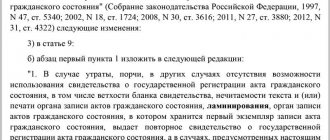Designed by Freepik
The main responsibility of parents is to raise their minor children and provide for the material needs of the children.
In addition to the moral component, the issue is regulated at the legislative level, in particular, by the RF IC. Situations that arise in connection with the protection of children's rights are resolved exclusively in court. Most often this happens when spouses divorce or alimony is withheld from a former partner.
The form, amount and procedure for withholding payments are also determined by the court in accordance with current legal acts. In accordance with them, a list of papers required for filing a claim has been established. However, what documents are needed to apply for alimony in a civil marriage?
Can a guardian apply for payment from a cohabitant?
In the event of the dissolution of a civil relationship, a man is not burdened with the need to support his significant other. The situation is different if a baby appears in the family. The fact is that children born to parents who are cohabitees have the same rights as minors in families created through official registration of marriage (Article 53 of the RF IC).
When a woman receives a refusal to support her child from her ex-partner, she has the right to petition the court to collect alimony payments from him.
Receiving funds from the parent is done in two ways: through an agreement and forcibly through the court.
Important! If after the birth of the baby a document was issued in which both parents are registered, then the collection of child support will take place in a simplified manner.
In order to establish paternity, the child's father must write a corresponding statement to the registry office. Most often, the parent refuses to submit the document due to the inability to visit the registry office or deliberately refuses to recognize the child.
Application for recognition of paternity sample in the registry office
In such a situation, a dash is placed in the column about the father. It becomes much more difficult to receive payments. Firstly, if the partners are ready to agree to a peaceful resolution of the issue, the spouse will need to submit an application to the registry office for recognition of paternity. Secondly, when filing a claim, a woman must provide evidence to the authority that it is her former partner who is the minor’s father. The court has the right to order an examination at the request of the mother.
Question:
What is the amount that the plaintiff will receive in a divorce?
Answer:
Alimony is established in relation to the spouse in shared form. Earnings include funds received from performing duties at the workplace and other income.
The amount transferred for child support depends on the number of children.
According to the law, the maximum payments are 50% of the total income of the alimony worker. At the same time, according to the RF IC, a deviation from withholding payments in installments is allowed. In some cases, they are replaced by a hard sum of money.
Is it possible to receive payments in a civil marriage?
Children who were born out of wedlock (illegitimate child) have the same rights as children born during an officially registered union. This means that, according to Russian legislation, both parents are required to support not only themselves, but also their offspring.
However, there are several points regarding the paternity of the baby.
It often happens that without registering a marriage, the father is not always indicated on the birth certificate. There may be several reasons for this, from the mother’s banal reluctance to include the father, to the desire of the common-law family to thus receive additional payments from the state, since single mothers have the right to higher social payments. Even despite the absence of an entry in the father column, alimony payments can be obtained in court, but more on that below.
Thus, you can give birth in a civil marriage without worrying that the baby may be left without the support of the father.
Features of alimony retention
The amount of penalties does not depend on the method of registration of the union between partners. Alimony disputes are resolved exclusively in court.
There are cases when partners agree on the distribution of responsibilities related to the maintenance of children. However, they will also have to be confirmed in court. This is necessary to protect minors and respect the rights of the child support provider.
When paying funds for the maintenance of a child by verbal agreement, the guardian can, after some time, submit an application to establish payments at a formal level.
How is paternity established?
According to family law, the mother of a minor who was officially married to her ex-husband receives payments from him in accordance with a court decision. In this case, the man is immediately recognized as the father of the baby. No consent or statement is required from him.
In a civil marriage, everything happens a little differently. Submission of documents to the registry office is allowed only with the voluntary consent of the partner.
To do this, you will need passports of both parties, a statement indicating the consent of the baby's father. If a man is against establishing paternity, then the status can only be changed through the court.
Important! A spouse can acknowledge paternity even if the minor is not his biological child.
If at the time of recognition of the child the man did not have information that the latter was not his child, then he has the right to renounce paternity. Recognition of kinship is carried out in court. It is worth remembering that a positive decision is made only if the applicant provides significant evidence of his ignorance.
In accordance with current legal acts, the money collected by the court before the man was recognized as the father is irrevocable.
Alimony agreement
Child support in a civil marriage can be collected voluntarily by drawing up a child support agreement. It is important that it be certified by a notary, otherwise it cannot be used as a writ of execution by the FSSP services.
Such an agreement specifies the details of the alimony payer and recipient, the amount of monthly collection (not contrary to the law), and payment terms.
A voluntary agreement allows you to peacefully establish obligations to support offspring in a civil or official marriage, without resorting to judicial practice.
A package of papers required to withhold payments from a common-law spouse
To collect alimony from your ex-spouse, you need to collect a number of documents and attach them to the application. The list of papers is designated at the legislative level. The application is submitted to the magistrate’s court at the partner’s place of residence. A sample can be obtained from the court office.
The list of required documents includes:
- a copy of the document issued at the birth of the baby;
- a copy of the plaintiff's passport;
- certificate of the applicant’s place of residence;
- a document indicating the defendant’s income level;
- a certificate confirming that the husband is the biological father of the minor.
In addition, you should take care of collecting the necessary evidence . They must also be documented:
- correspondence with the defendant;
- joint photographs, videos;
- call recordings;
- cards, gifts signed by a man;
- receipts for funds transfer.
If a paternity test is necessary, the defendant is required to provide genetic material. If he refuses to do this, then the court will accept this as evidence of a family relationship between the baby and the plaintiff’s partner.
If the outcome of the case is positive for the applicant, you can move on to the next stage, namely the requirement to withhold alimony from the spouse. The procedure is similar to that of officially married couples.
Establishing paternity
It is impossible to collect child support from a person who does not recognize the child, so you must first carry out the procedure for establishing paternity.
She may be
- voluntary;
- forced.
Initially, data on the child’s father after birth must be recorded in his presence, since the mother does not have a document confirming the marriage.
If there is a dash on the birth certificate, you can independently submit an application to the registry office for recognition of paternity. It is not difficult to register a father in the registry office, the main thing is the consent of the father.
If there is no such consent, and moreover, the father denies the relationship, registration is impossible and the mother will have to go to court.
In addition to standard biological or genetic examination, the court may take into account other evidence.
Submitting genetic material for examination is not forced, and the former spouse can refuse it. Then the plaintiff will have to describe in detail the time he lived with this person in order to convince the court of paternity.
Thus, the following may be taken into account:
- Confirmed residence.
- Joint photographs of father and child.
- Video materials.
- Testimony from relatives.
The father is not obliged to hand over the material, but he must understand that the court will no longer be on his side if he refuses, since it creates the appearance of an attempt to hide the fact of paternity.
The procedure for filing an application for alimony without the participation of the court
To receive payments from your ex-husband, it is not at all necessary to resort to the help of the court. Parents have the right to enter into an agreement that specifies the amount of support for a minor and the conditions for receiving it.
Important! The agreement acquires legal force only after it is certified by a notary. This procedure is mandatory in accordance with Art. 100 IC RF.
The amount of payments should not be lower than the level established by family law.
The agreement is recognized as an executive document. If the baby’s father refuses to fulfill his obligations, the woman can directly contact the bailiffs.
Rights of a common-law wife
Despite the fact that the concept of civil marriage has been replaced, today this form of relationship is the most popular.
However, a civil marriage is nothing more than the registration of relations in the civil registry office. That is, a civil marriage is a registered relationship, accompanied by the issuance of a certificate and the affixing of appropriate stamps to the spouses’ passports. The relationship between a man and a woman living in the same living space, leading a joint household, raising joint children, without the appropriate formalization and registration of marriage, is called cohabitation.
But, despite this, it is the cohabiting woman who is usually called civil.
Due to the norms of the current legislation, since the couple has not decided to formalize their family relationship, it means that the provisions of the RF IC and other regulations in the field of family law will not apply to them. That is, if a couple breaks up for some reason, neither party should legally support the remaining half.
However, the state takes a tough position in relation to children born to parents who have not registered their relationship. The article of the RF IC determines that children born in marriage have the same rights in relation to parents who never reached the registry office.
Accordingly, the parent (and in most cases this is the mother) has the right to file for alimony to the common-law spouse.
But when solving this situation, the main question arises: who is the father of the child and has this fact been documented? That is, if a child is born in marriage, the father is a man who is in an official relationship with the mother.
In relation to civil marriage (cohabitation), the situation is slightly different: you will have to prove the fact of paternity.
Article 53 of the Family Code of the Russian Federation “Rights and obligations of children born from unmarried persons”
How does collection work?
Withholding funds in favor of children is carried out through several mandatory steps. These include:
- The writ of execution is handed over to the bailiffs.
- The department notifies the employer of the alimony provider.
- The organization retains a portion of the earnings determined during the court hearing. The funds are transferred to an account opened by the minor's guardian. The money must be received no later than three working days from the date of payment.
- In the event of dismissal of a person in respect of whom a withholding has been established, the employer is obliged to notify the bailiff service of this fact. The alimony provider is also obliged to convey the relevant information to the executors.
- If the father evades payments, then a statement is drawn up against him and sent to law enforcement agencies.
What can the court do?
If the list of documentation is provided in full and the statement of claim is drawn up correctly, the authorities will accept the entire package for consideration. Depending on the type of production, a meeting will be held. The court assigns a maintenance obligation in one of 3 options:
- Percentage of the payer's income. Convenient in cases where the defendant has a white salary at an official workplace.
- Solid value. It is assigned if the payer has a large income from part-time jobs, an unstable salary, or is not officially employed at all.
- Combined payments. Appointed in individual cases, when none of the previous options will fully protect the interests of the child.
Flat and combined payments are usually suitable if the payer:
- Hides your real income;
- Unemployed;
- Receives wages in foreign currency.
The court order takes effect immediately after issuance; the claim proceedings begin to take effect only after 10 days (the period for the defendant to file an appeal).
The list of documents for submitting a claim to the court department for alimony, provided for parents who were not officially married, does not differ from those who are divorced in the eyes of the state. This is due to the unconditional obligation of parents to raise and financially provide for their children, regardless of the presence of a marriage or divorce certificate.









